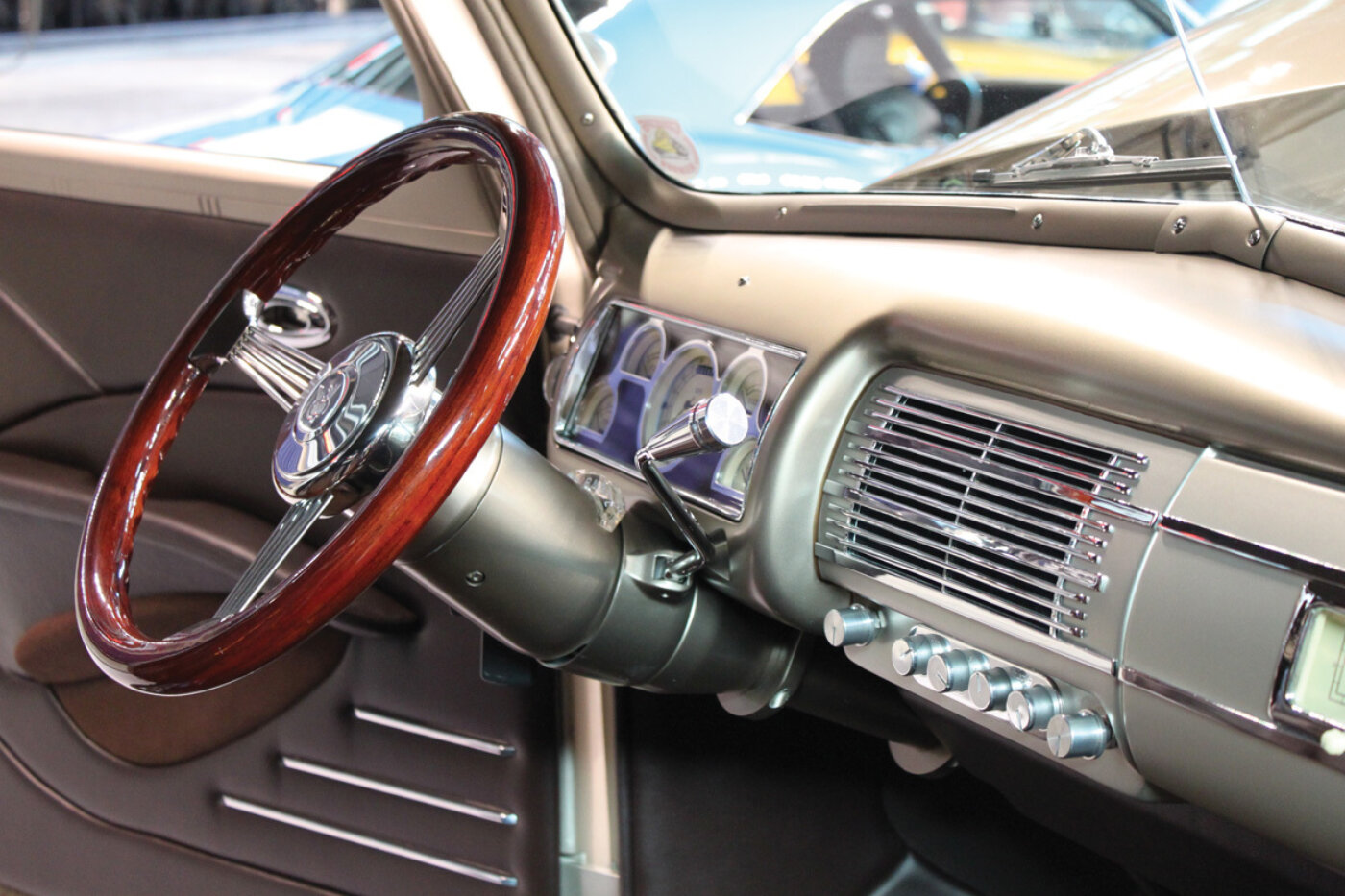
ididit's Tech Tips for Steering
By Ben Mozart
If you aspire to own or build a great rod or replica, don’t take the positioning or the proportions of the steering column assembly for granted. A number of variables are involved in creating a comfortable setup, including the cockpit shape and seat location, particularly seat-back tilt and cushion height, as well as steering wheel design. The rim’s diameter, and whether in dished or flat form, along with human proportions, all come into play.
Whether installing a steering unit in a new-car build or replacing an old or obsolete unit with a new column, the formula remains the same. And it’s no surprise that well-used steering columns from a previous era are being replaced every day. Wear, however, is rarely apparent in the steering column’s capacity to turn the wheels. Rather, it’s evident by looseness in up-and-down and back-and-forth movement within the column. Worn bearings are usually the culprit. Also, original tilt mechanisms located at the top of the column can wear out.
No matter how alluring a sporty street machine might appear, it is almost impossible to discover if it qualifies on all these counts unless you test it yourself. Exact steering column location and bespoke proportions – those made to the driver’s personal specifications – are indispensable. Without them, the ergonomics (the relationship between the human form and the car) can become just an ill-fitting, uncomfortable situation.
As an example of what can happen, Matthew Jones, Art Morrison’s lead engineer, shares a personal experience: “I wanted to retain the original 16-inch steering wheel and column of my 1967 Chevelle,” he notes. “Originally it had no tilt mechanism, but when I had my seat re-foamed, my legs were almost trapped under the wheel and getting in and out was difficult.”
Human proportions are critical, too. For instance, are you shorter than average, or perhaps well over 6 feet tall? Do you have short or long arms? How much reach do you prefer? All of these dictate whether you use either a flat or a dished steering wheel. Logically, you’ll need to avoid having a wheel that is placed too close or one that is too far away.
Beyond cockpit space and ergonomics, evaluate gear shifting as well: The choice is between floor or column shift. In which cases would you consider column shift? Column shifters are ideal for rods and replicas with a full-width bench seat, as they provide unfettered space for the seat’s fore-and-aft travel. And some enthusiasts prefer having all the mechanicals on the column. Other items to consider are self-canceling turn signals and four-way emergency flashers, along with the related wiring harness.
Last but far from the least important is the option of a tilt mechanism for the steering column. Mechanisms have been available for decades, and though slim, clean-looking replacement columns are available without tilt, most rod shops find their clients request it. A desirable, modern convenience found in everyday cars, it’s one that most rodders and replica owners don’t wish to surrender.
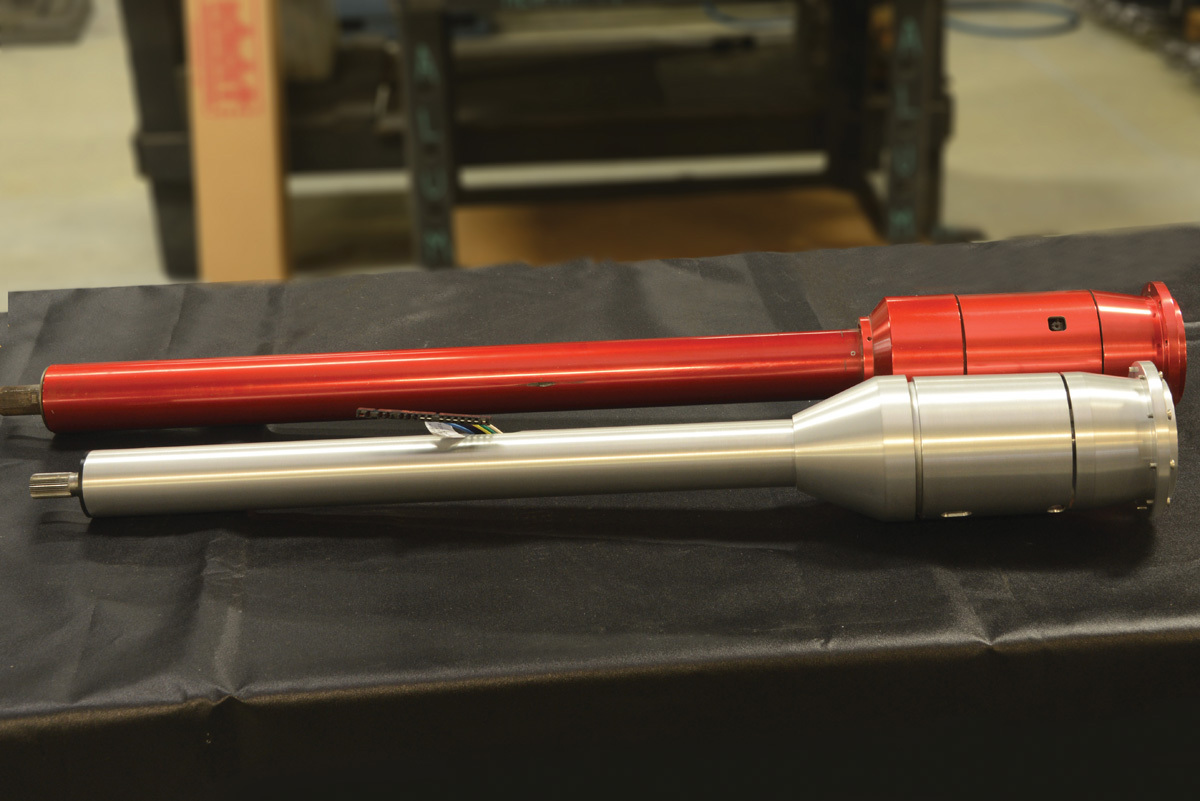
The problem with an original tilting unit is twofold, though. “Finding an original tilt wasn’t easy,” Matthew observes. “When I eventually uncovered one, the price tag was $2,000, which wasn’t a viable proposition. So, I was happy to settle for an ididit unit for under $500, which came with wiring that connected to my original harness.”
Five-angle tilt mechanisms have enjoyed popularity for some time, but now ididit has upgraded its systems to achieve eight positions. These units exhibit steering-wheel travel of 35 degrees – arcing through 15 degrees of movement above center, and 20 degrees below.
A further point to review when calculating the dimensions of a replacement tilt column involves the steering wheel. If you convert to a nine-bolt steering wheel, you will probably need an adapter. ididit’s polished boss of billet aluminum can add 2 inches or more to the column’s overall length if the wheel profile is altered from flat to dished.
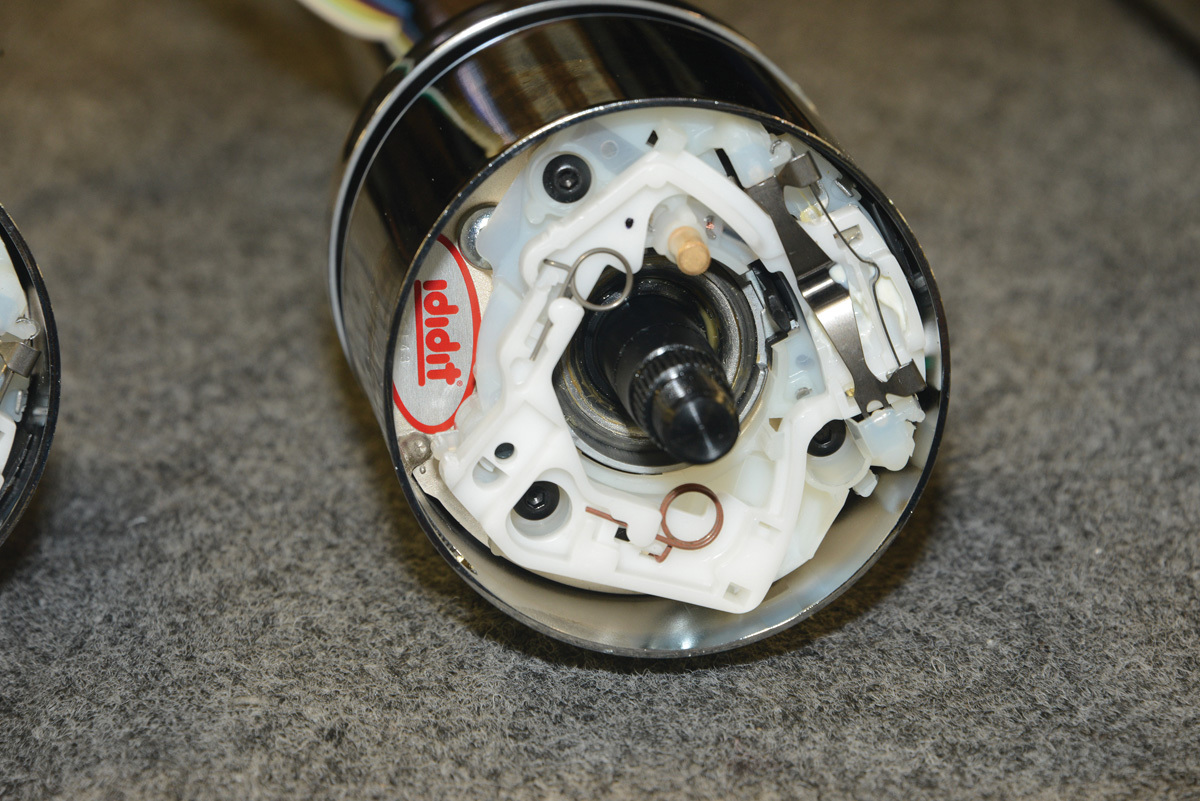
The turn signals are canceled by one of two cam lobes (not shown), which are positioned about a 1/2 inch apart. They make contact with the coiled, canceling springs-which act as the turn-signal switch-and as a lobe rolls past a spring, the turn signal function is canceled.
Once the appropriate distance between the column and the dash has been established, a drop link secures it. A vast range of varying lengths of drop links is available from steering specialists.
How about an off-the-shelf versus a custom unit? Though replacement steering columns for popular makes and models are available off the shelf in multiple lengths, the crown jewel for many car builders is having access to a prized one-off assembly. Sometimes the one-off is requested in order to have all the bells and whistles, particularly a collapsible feature where the column has axial adjustment. On the other hand, access to a one-off assembly is crucial where the vehicle is rare or spawned from now obsolete low-volume production.
To address these à la carte requirements, ididit has a detailed process: First, the company requests photographs of the original steering column arrangement as installed, particularly how the entire mechanism attaches to the dash, along with its proximity to the pedals. Also requested are as many relevant measurements as possible and, importantly, access to the original column. Like the old carpenter’s advice: measure twice, cut once. Detailed photographs from a variety of angles, plus accurate measurements ensure a precise fit. ididit’s one-off custom units typically take about a month to produce.
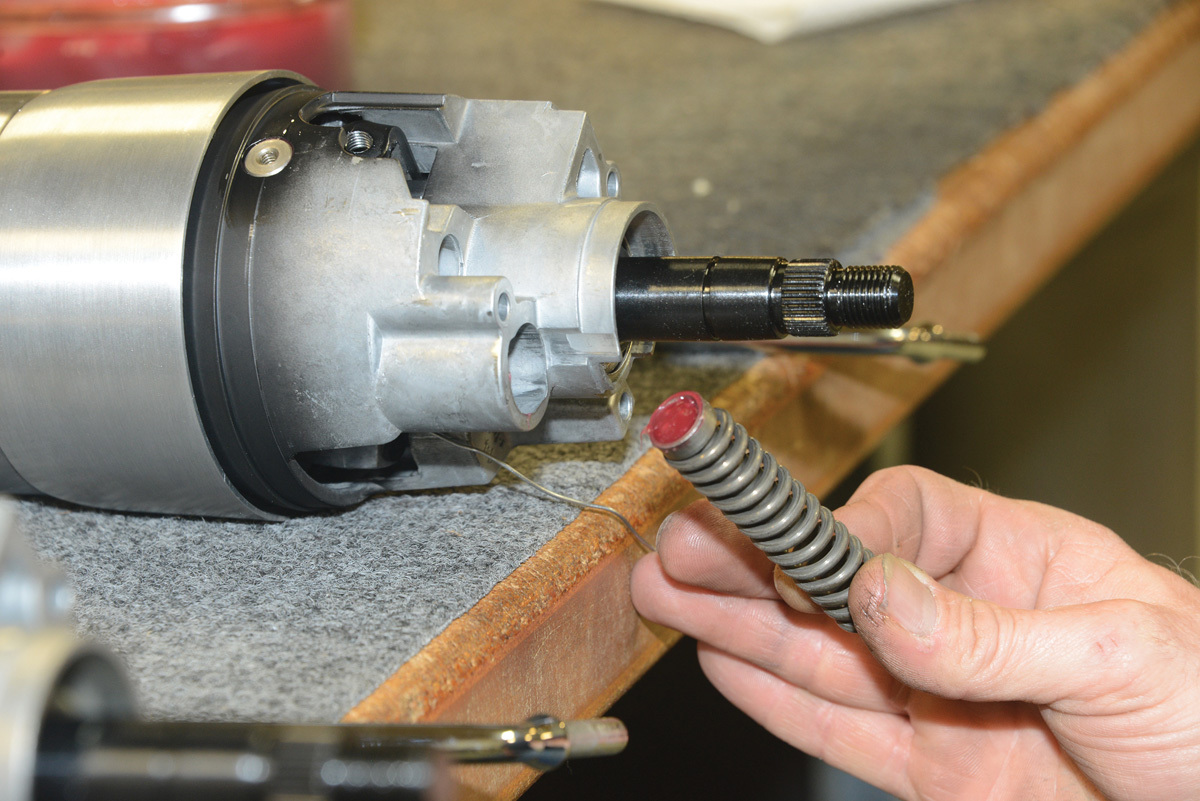
This compression spring locks the tilt mechanism in one of eight positions, increasing or decreasing the space between the driver and the steering wheel.
Most shafts are constructed from 1-inch thick-wall DOM 1010 tubing, and terminate in either a splined end or the more prevalent formed-end known as a “Double D.” Naturally, these ends connect the column to a steering box or rack and pinion. (Note that this final connection might require some fabrication or modification, especially if a larger engine is used.) The most popular splined lower end is 1-inch, with 48 splines, although a 3/4-inch size is a further option. Similarly, the Double D ends are also available in 3/4 or 1 inch.
The turn signals and their canceling mechanism are usually of earlier GM passenger-car origins. The reasoning is simple, since steering columns from 1969 through ’94 models are known for their superior design. According to ididit, they are versatile, reliable and all new components are readily available. For those owners of Fords who object to using GM parts, Blue Oval components are also available.
All told, for both rodders and replica owners, a well-proportioned steering column assembly with comfortable ergonomics and a fine finish is a prized piece. It connects you with your ride in a very personal way, providing pride of ownership and a warm sense of well-being from behind the wheel.
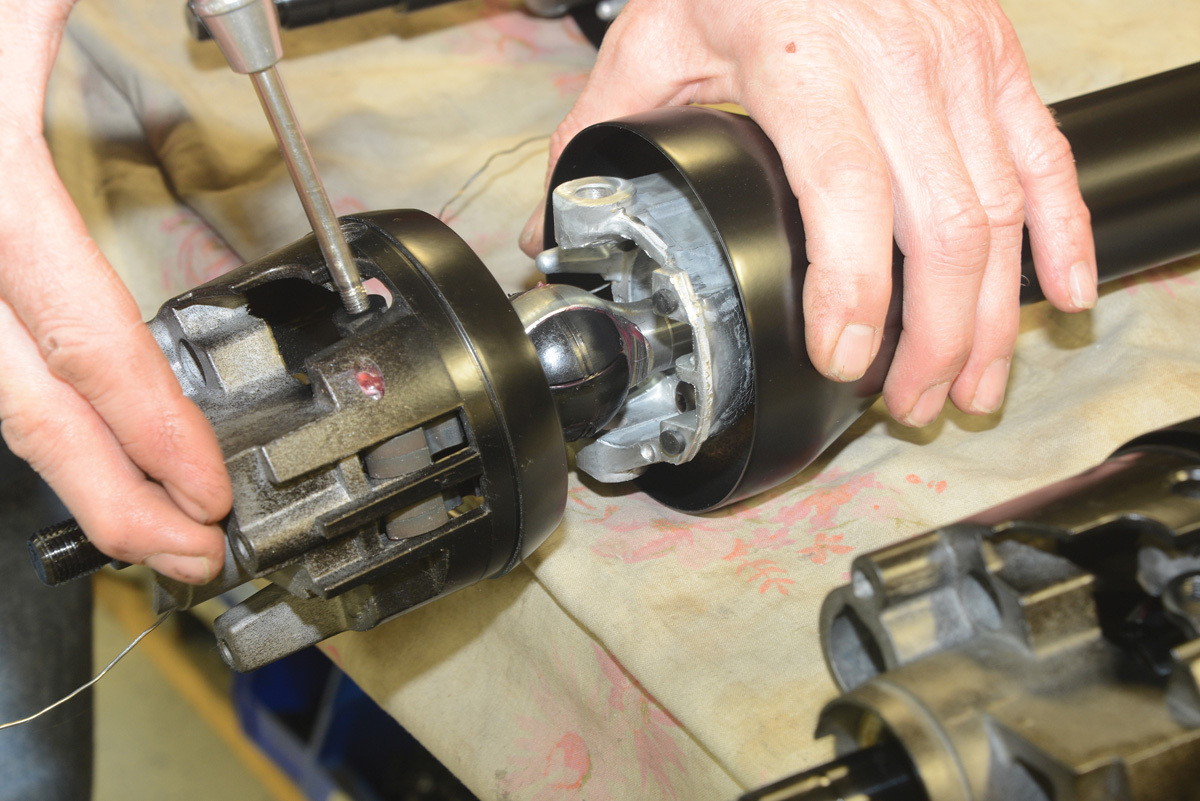
Inside the aluminum castings that form the tilt mechanism are two shafts, an upper and a lower, terminating with forked ends that form part of the articulating sphere. The ends the embrace the sphere are positioned 90 degrees apart and at the center of this spherical assembly is a grooved metal ball that is manufactured in two halves.

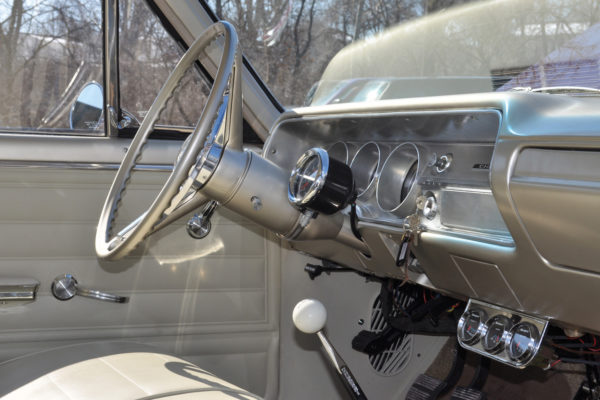
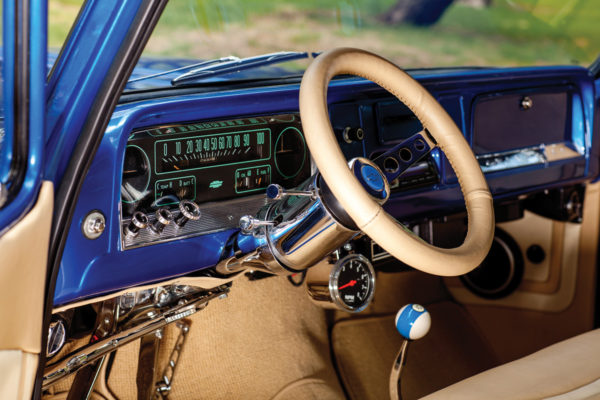
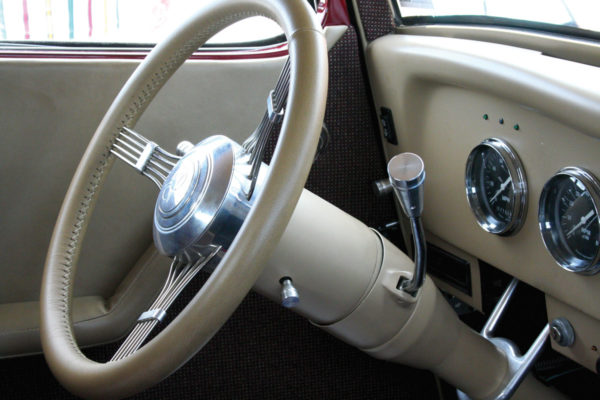
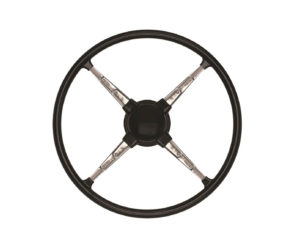
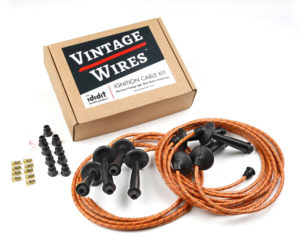
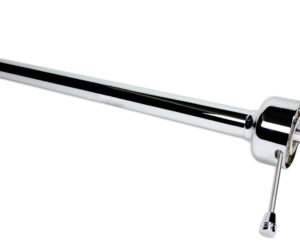
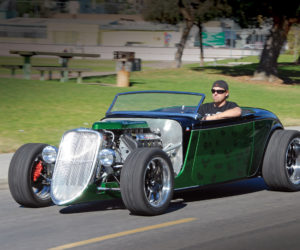
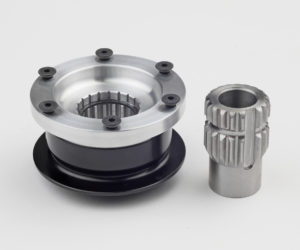
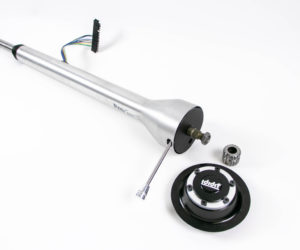




Comments for: Behind the Wheel
comments powered by Disqus